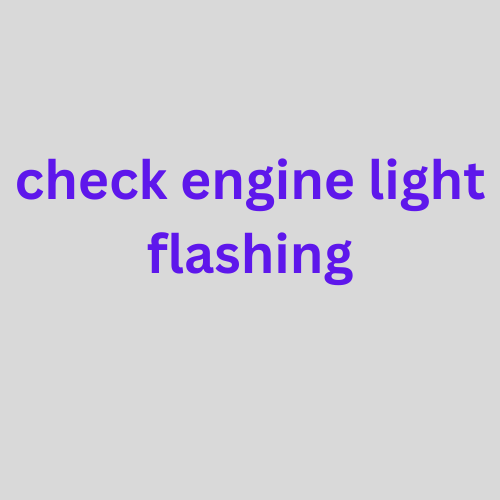The flashing check engine light on your vehicle’s dashboard is not something to be taken lightly. It’s a warning signal that should be addressed promptly to prevent potentially costly damage to your car’s engine and ensure your safety on the road. In this explanation, we’ll delve into what actually check engine light flashing means, what causes it, and what steps you should take when you encounter this warning.
Understanding the Flashing Check Engine Light:
When your car’s check engine light is solid, it typically indicates an issue that needs attention, such as a faulty sensor or an emissions problem. However, when the light is flashing, it signals a more severe problem that requires immediate action. Ignoring a flashing check engine light can lead to severe engine damage or even a breakdown.
Common Causes:
Misfiring Engine: A flashing check engine light often indicates engine misfires. This occurs when one or more cylinders in your engine fail to ignite properly, resulting in unburned fuel entering the exhaust system. Causes can include faulty spark plugs, ignition coils, or fuel injectors.
Catalytic Converter Damage: Continued driving with a misfiring engine can lead to damage to the catalytic converter, which is a critical component of your vehicle’s emissions system. Replacing a catalytic converter can be expensive.
Oxygen Sensor Issues: Oxygen sensors monitor the amount of oxygen in your exhaust gases and help regulate fuel injection. If an oxygen sensor fails, it can lead to poor fuel economy and increased emissions.
Loose or Damaged Gas Cap: While less serious than other causes, a loose or damaged gas cap can trigger a flashing check engine light. It’s a simple fix but still worth addressing promptly.
What to Do When the Check Engine Light Flashes:
Pull Over Safely: If the check engine light starts flashing while you’re driving, pull over to a safe location as soon as possible. Continuing to drive with a flashing light can cause further damage.
Check for Steady Light: Sometimes, a flashing check engine light can turn into a steady light. If this happens, it’s an indication that the issue may have temporarily resolved itself, but you should still get it checked.
Don’t Ignore It: Never ignore a flashing check engine light. It’s a clear indication that something is seriously wrong with your vehicle.
Call for Assistance: If you’re not comfortable diagnosing or addressing the issue yourself, call for roadside assistance or have the vehicle towed to a reputable mechanic. They can perform a diagnostic scan to pinpoint the problem accurately.
**Avoid Driving: If the light is flashing, avoid driving the vehicle until it’s been inspected and repaired. Ignoring a flashing check engine light can lead to severe engine damage and costly repairs.
In summary, a flashing check engine light is your car’s way of urgently communicating a severe problem that needs immediate attention. Whether it’s due to a misfiring engine, catalytic converter damage, oxygen sensor issues, or a loose gas cap, it’s crucial to respond promptly to prevent further damage and ensure your safety on the road. Don’t hesitate to seek professional assistance to diagnose and resolve the issue.






